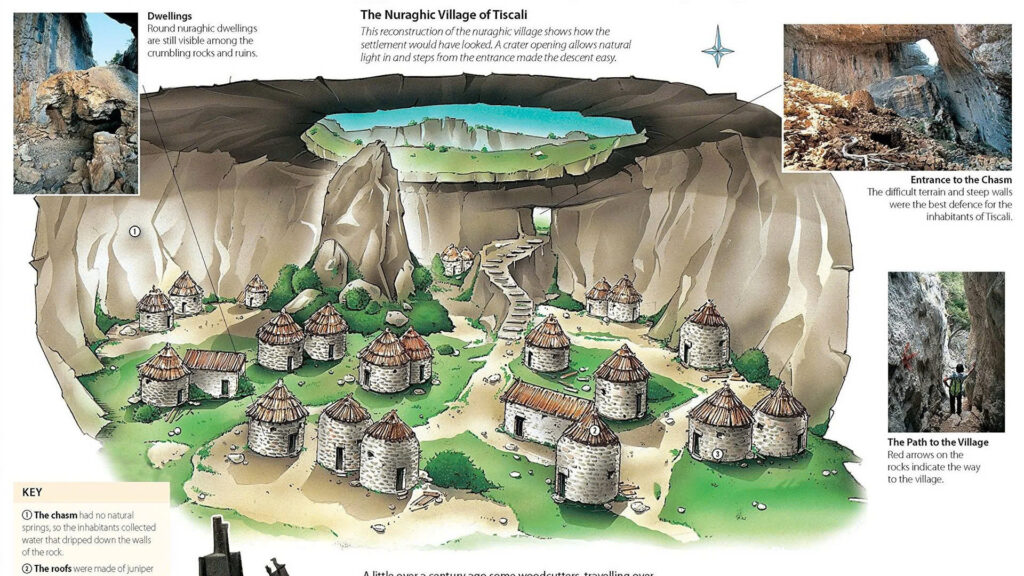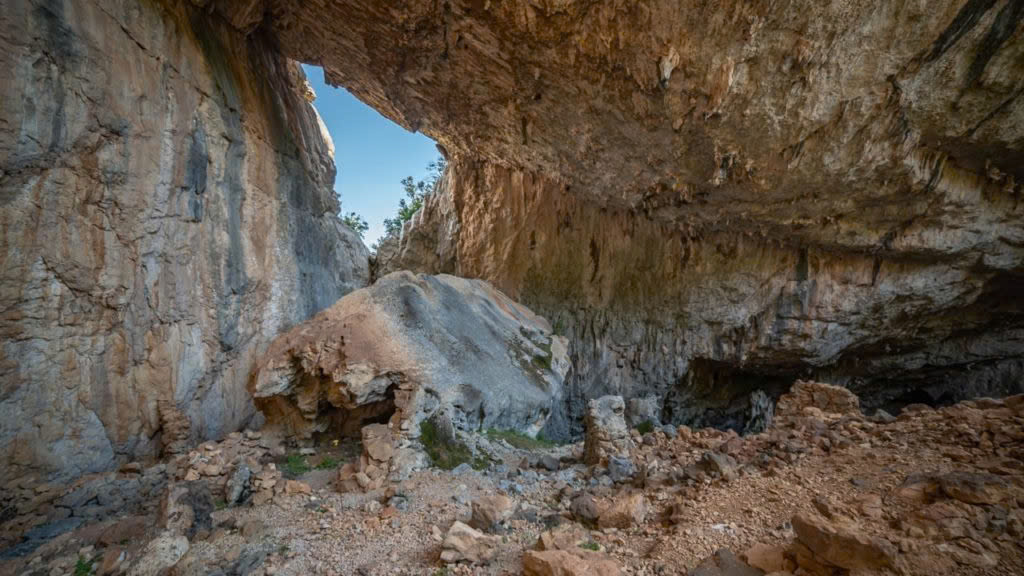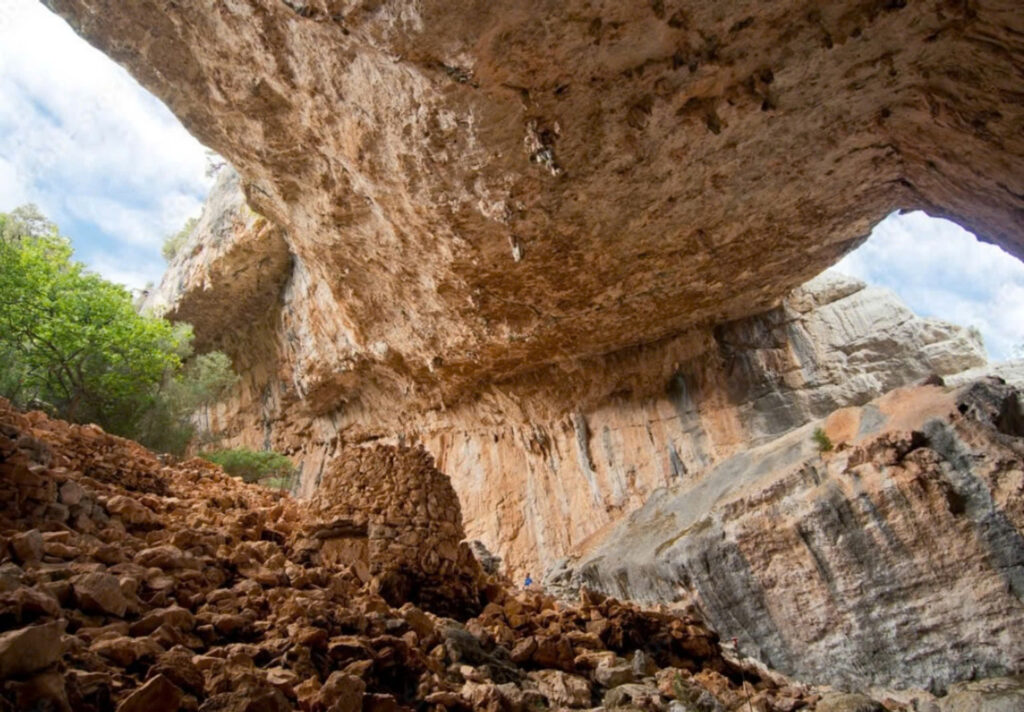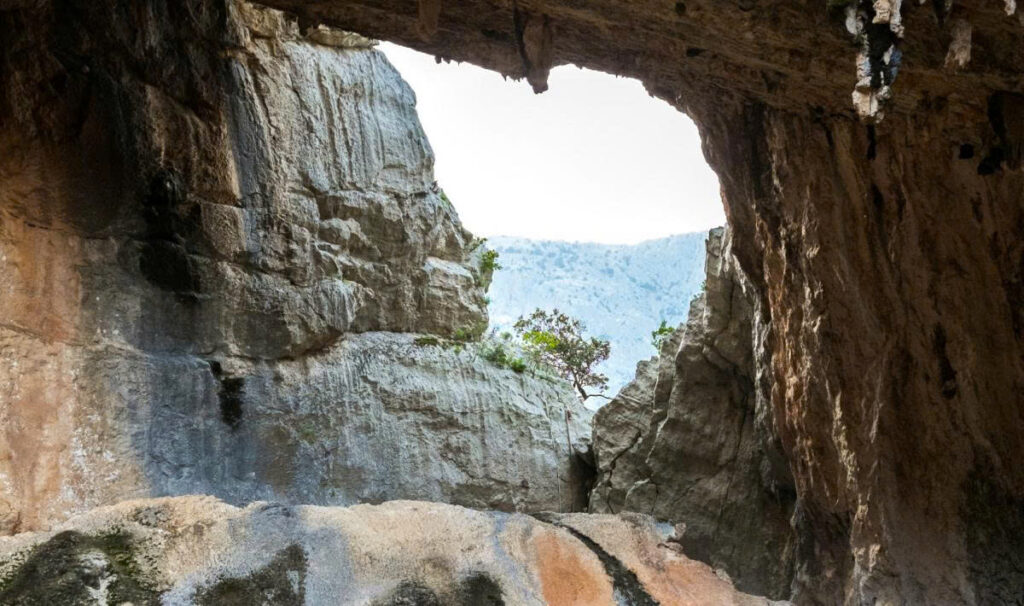A Village Concealed in Time

High atop Mount Tiscali in Sardinia, Italy, lies a secret that remained hidden for millennia. Nestled within an enormous sinkhole, the Bronze Age Nuragic village of Tiscali stands as a testament to human ingenuity and adaptability. This remarkable settlement, invisible to the casual observer, offers a unique window into the mysterious Nuragic civilization that once thrived on the island.
The Nuragic Legacy

The Nuragic people, known for their distinctive stone towers called “nuraghes,” flourished in Sardinia from around 1800 BCE until the Roman conquest in the 2nd century BCE. These ancient inhabitants left behind over 7,000 nuraghes scattered across the island, along with numerous villages and sanctuaries that speak to their sophisticated construction techniques and strong sense of community.
Unveiling the Hidden Marvel
A Serendipitous Discovery
It wasn’t until the late 19th century that Tiscali’s existence came to light, with systematic excavations beginning in the early 20th century. The village’s location within a vast limestone sinkhole at the summit of Mount Tiscali had kept it concealed for centuries, preserving its secrets from the outside world.
A Village Born from Stone

As archaeologists delved deeper, they uncovered the remains of approximately 40 circular dwellings, crafted from local limestone and once topped with wooden roofs. These simple, round structures, typical of Nuragic architecture, were ingeniously integrated into the natural contours of the sinkhole, blending seamlessly with their rocky surroundings.
Life in the Hidden Village
A Community United
The layout of Tiscali, with its clustered houses and communal spaces, paints a picture of a close-knit community. Artifacts discovered at the site – pottery, stone tools, and food remnants – offer glimpses into the daily lives of its inhabitants. The presence of storage pits suggests a people adept at agriculture and animal husbandry, supplementing their diet through hunting and foraging.
Theories and Mysteries

The purpose of Tiscali remains a subject of scholarly debate. Was it a refuge from invaders, a sacred site for religious ceremonies, or perhaps a seasonal settlement used for trade or social gatherings? The lack of fortifications suggests that the natural defense provided by the sinkhole was deemed sufficient, highlighting the strategic choice of location.
A Legacy Preserved
Today, Tiscali stands as a significant archaeological and tourist site, drawing visitors from around the world. The journey to the village, a scenic hike through the Supramonte mountains, is an adventure in itself. As conservation efforts continue to preserve this unique piece of history, Tiscali offers an unparalleled opportunity to step back in time and experience the ingenuity of Sardinia’s ancient inhabitants.
The Enduring Mystery

As research continues and new discoveries are made, the enigmatic village of Tiscali continues to captivate our imagination. Whether viewed as a refuge, a sacred site, or a testament to human adaptability, this hidden marvel serves as a powerful reminder of the rich tapestry of human history that lies just beneath the surface, waiting to be uncovered.

